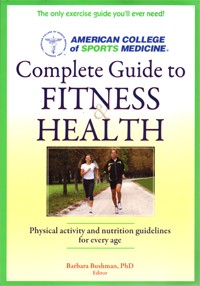|
Bad Exercise
Author:
Stan Reents, PharmD
Original Posting:
07/24/2012 03:26 PM
Last Revision: 12/10/2018 05:35 AM
With all the health benefits of exercise, how can exercise be bad? It turns out that many resistance exercises, if not performed correctly, can cause injury. And, too much aerobic exercise can also be bad for you.
As an example, one of the most extreme consequences of incorrect exercise is "rhabdomyolysis." Anyone -- at any age and at any fitness level -- can develop this if they exercise too strenuously for what they are used to. This can happen after a single exercise session. (see: "Exertional Rhabdomyolysis").
Listed below are some exercises to avoid.
BAD RESISTANCE EXERCISES
Resistance exercises I routinely discourage are: (a) bent-over rows, (b) leg-lifts, and (c) the plank. These exercises have the potential to injure the back:
Bent-Over Rows
• Avoid This: Bent-Over Rows with a Barbell - Lifting weights while bent over at the waist is a great way to injure your lower back.
• Do This Instead: Bent-Over Rows with a Single Dumbbell - Use a single dumbbell, not a barbell, so that you can exercise 1 side at a time. Place your free hand, and your knee on that side, on a bench. This way, your spine is supported like a table with 3 legs.
Leg Lifts
• Avoid This: Leg Lifts With Straight Legs - I've always disliked this exercise. Some may think that leg-lifts are a good exercise to build core strength, however, the hip flexors are doing most of the work, just like the chains that lift a drawbridge. To lift the legs off the ground, the hip flexors pull against the pelvis. But, unlike the castle wall, the pelvis is not immobile. As the hip flexors contract, they pull against the pelvis, causing it to pivot. This puts strain on the lower back. This strain is exaggerated in people with long legs.
• Do This Instead: Leg Lifts in a Frog Leg Position - While lying on your back, bend your knees and bring your heels up to your rear end. Now, point your knees outward, away from each other. You should now be in a frog leg position. If you do leg lifts with your legs in this position, you shift the effort from the hip flexors to the abdominals. Not only is this a better way to build core strength, it lessens strain on the low back.
The Plank (aka: Front Bridge)
• Avoid This: The Plank - This is a motionless exercise where you hold your body horizontally off the ground supported by only your elbows and your toes. Stuart McGill, PhD, an international authority on rehab of the back, has shown that when the long, thin muscles of the back are held in a sustained contraction, they can be rapidly depleted of oxygen even when not contracting at their full tension (McGill SM, et al. 2000). The plank requires a very high contraction force in these muscles. (This is discussed in greater detail in: "Exercise and Back Pain.") Lack of oxygen delivery is not good for any tissue! And, when you consider that there really doesn't seem to be any benefit from doing planks, you can understand why I give it the "Dumbest Exercise Ever" award.
• Do This Instead: Single Leg Extension While On Hands and Knees - Start by getting on your hands and knees. Then, lift one leg up and extend it behind you until it is straight. Both hands, and your other knee, are on still on the ground. According to Dr. McGill, this is a much safer way to exercise the long, thin muscles of the back (McGill SM. 2001).
The June 2012 issue of Men's Health magazine (p. 52) listed several additional resistance exercises that should be avoided:
Dips
• Avoid This: Bench Dips (ie., placing the palms of your hands on a bench behind your back) - Doing a dip with your hands too far behind your torso over-extends the shoulder joint. Adding weights just makes it worse.
• Do This Instead: Modified Push-Ups - Even when dips are done correctly (ie., on a set of parallel bars), dips are incredibly hard on the shoulder joint. Instead, do standard push-ups, but with your hands close together on the floor.
Obliques
• Avoid This: Torso Rotation While Seated - This is a weight-stack machine where you twist your upper torso while seated. Whenever your hips and your shoulders are not rotating in sync, you risk injuring your spine.
• Do This Instead: Cable Cross-Over Chops - Using a cable machine with a high pulley, grab the handle with both hands. From a standing position, pull down, and diagonally, across your body by bending at the waist. Do not bend your elbows. You do not need much resistance to really work your abs and obliques!
Upright Rows
• Avoid This: Close-Grip Barbell Upright Row - This one is bad for your shoulder joint. Lifting a barbell from your belly to your neck with your hands close together can create an impingement on the rotator cuff muscles and tendons. Mike Robertson, CSCS, stated in Men's Health magazine that this is "absolute worst exercise" you can do.
• Do This Instead: Wide-Grip Barbell Upright Row - Make sure your hands are at least shoulder-width apart on the barbell.
45-Degree Leg Press
• Avoid This: Too Much Weight - This one is bad for your low back if you load-up too much weight. The "easy chair" position of your hips and back in this type leg press machine causes the tailbone to curve too much as the weight is lowered all the way back down.
• Do This Instead: Lunges, Squats, Step-Ups - Mike Mejia, CSCS, stated in Men's Health magazine that exercises like lunges, squats, and step-ups are better choices than this seated 45-degree leg press machine.
BAD AEROBIC EXERCISE
Other health problems can occur when a person exercises incorrectly over a long period of time. In this case, this issue is not necessarily what types of aerobic exercise to avoid, but, rather, how much to avoid. Some of these topics are discussed more thoroughly in other reviews in the Articles Library. Here are some examples:
Effects on the Skeleton: Men who regularly ran 20 miles/week had better bone density than those who ran less. But, this benefit was completely negated at distances of 60-75 miles per week (MacDougall JD, et al. 1992).
Effects on the Heart: Recently, it has been suggested that long-term excessive endurance exercise can lead to myocardial fibrosis, coronary artery calcification, and malfunction of the contracting action of the heart (O'Keefe JH, et al. 2012).
Effects on the Immune System: It is commonly reported that endurance athletes have a higher incidence of colds and upper respiratory illness. This is believed to be due to a suppressed immune system.
Effects on the Endocrine System: When young female athletes lose enough weight and body fat so that their normal menstrual cycle is disrupted (amenorrhea), they are at risk of a decline in bone density. This is known as "female athlete triad" (Torstveit MK, et al. 2005).
BAD EXERCISE PROGRAMS
It is important to maintain a balance of aerobic exercise and resistance exercise in your routine. Here are some examples of what can happen if you do only 1 type of exercise for many years:
Aerobic Exercise Without Impact Exercise
Cyclists and swimmers (Bellew JW, et al. 2006) who do not also include some type of impact exercise (see below) in their routine can have a decline in bone density. Even though their cardiovascular fitness is superb, the bone health of these athletes is worse than similarly-aged people who don't exercise as hard (Nichols JF, et al. 2003).
THE SOLUTION: Include "impact" exercise. "Impact" exercise is a term I use to describe exercises or sports that involve jumping (eg., jumping jacks), or, change-in-direction running (eg., basketball, lacrosse, racquetball, soccer, squash, tennis, volleyball, etc). These activities produce an impact on the skeleton which causes it to flex. The amount of flexing is slight, but significant. This, in turn, stimulates bone to become stronger.
Resistance Exercise Without Aerobic Exercise
Heavy weight-lifting causes blood pressure to skyrocket to astronomical levels. In one case, the blood pressure in the brachial artery of a weight-lifter hit 480/350 mmHg while he was performing a leg press! (MacDougall JD, et al. 1985). Even though these high pressures are very brief, when the vascular system is subjected to them over and over again, it is enough to cause a stiffening of the walls of the central arteries. In one study, the walls of the carotid arteries became stiffer after just 4 months of resistance training 3 times per week (Miyachi M, et al. 2004). In medical terms, this is called "decreased compliance" and it's not good.
THE SOLUTION: Include aerobic exercise regularly in your exercise program.
SUMMARY
Even though exercise has diverse health benefits, nevertheless, some exercises, bad technique, and too much exercise can be harmful. Consider hiring a certified and properly-educated personal trainer, or, obtaining a high-quality reference book for guidance. (See below.)
FOR MORE INFORMATION
Books:

In 2011, ACSM published their "Complete Guide to Fitness & Health." This book is intended for consumers. It is a very thorough resource, and may be a bit too technical for some readers. However, it is very current and is backed up by solid science.
The following reviews in our Articles Library may also be helpful when designing your exercise program:
EXPERT HEALTH and FITNESS COACHING
Stan Reents, PharmD, is available to speak on this and many other exercise-related topics. (Here is a downloadable recording of one of his Health Talks.) He also provides a one-on-one Health Coaching Service. Contact him through the Contact Us page.
REFERENCES
Bellew JW, Gehrig L. A comparison of bone mineral density in adolescent female swimmers, soccer players, and weight lifters. Pediatric Phys Ther 2006;18:19-22. (no abstract)
MacDougall JD, Tuxen D, Sale DG, et al. Arterial blood pressure response to heavy resistance exercise. J Appl Physiol 1985;58:785-790. Abstract
MacDougall JD, Webber CE, Martin J, et al. Relationship among running mileage, bone density, and serum testosterone in male runners. J Appl Physiol 1992;73:1165-1170. Abstract
McGill SM, Hughson RL, Parks K. Lumbar erector spinae oxygenation during prolonged contractions. Ergonomics 2000;43:486-493. Abstract
McGill SM. Low back stability: from formal description to issues for performance and rehabilitation. Exerc Sport Sci Rev 2001;29:26-31. Abstract
Miyachi M, Kawano H, Sugawara J, et al. Unfavorable effects of resistance training on central arterial compliance. Circulation 2004;110:2858-2863. Abstract
Nichols JF, Palmer JE, Levy SS. Low bone density in highly trained male master cyclists. Osteoporos Int 2003;14:644-649. Abstract
O'Keefe JH, Patil HR, Lavie CJ, et al. Potential adverse cardiovascular effects from excessive endurance exercise. Mayo Clinic Proc 2012;87:587-595. Abstract
Smathers AM, Bemben MG, Bemben DA. Bone density comparison in male competitive road cyclists and untrained controls. Med Sci Sports Exerc 2009;41:290-296. Abstract
Torstveit MK, Sundgot-Borgen J. The female athlete triad: are elite athletes at increased risk? Med Sci Sports Exerc 2005;37:184-193. Abstract
Yates A, Leehey K, Shisslak CM. Running - an analogue of anorexia? N Engl J Med 1983;308:251-255. Abstract
ABOUT THE AUTHOR

Stan Reents, PharmD, is a former healthcare professional. He is a member of the American College of Lifestyle Medicine (ACLM) and a member of the American College of Sports Medicine (ACSM). In the past, he has been certified as a Health Fitness Specialist by ACSM, as a Certified Health Coach by ACE, as a Personal Trainer by ACE, and as a tennis coach by USTA. He is the author of Sport and Exercise Pharmacology (published by Human Kinetics) and has written for Runner's World magazine, Senior Softball USA, Training and Conditioning and other fitness publications.
Browse By Topic:
aerobic exercise, back pain, exercise and health, exercise guidelines, exercise information, exercise resources, extreme exercise, health and fitness targets, heart disease, osteoporosis, personal trainers, resistance training, sports medicine, ultra-endurance races
Copyright ©2026 AthleteInMe,
LLC. All rights reserved.
|